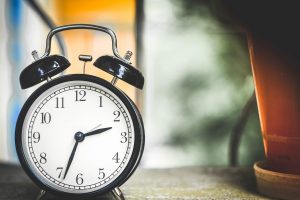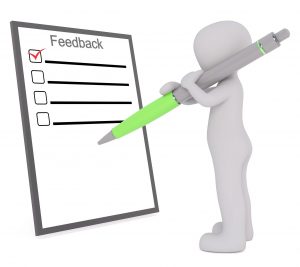
How science teacher Amber feels after her first day…
Excited? Happy? Overwhelmed? Stressed? Exhausted? These are all feelings I would expect to be feeling after my first day, but instead I feel nervous, doubtful and underwhelmed. My initial reaction to these feelings was you shouldn’t be feeling this way, this is what you wanted to do – is it really what you want to do? I worried about my emotions. I worried that if I didn’t feel the excitement and joy that teaching brings, was I really cut out for it?
After fretting, I realized how much of a closed mindset I had. These feelings weren’t feelings of failure. They are feelings of success. Instead of focusing on things that went wrong, I focused on things that could have gone better. Instead of wishing I had done things differently, I spent time thinking of how I can change for the future. Being nervous, critical of my work, and reflective only mean that I care, that I have chosen the right career, and am ready to be a teacher.
Here are some of my critical reflections:
1. Was I too nice?
I spent the first class engaging students in a fun lab activity and getting-to-know-you activities, rather than spending 85 minutes on the course outline and moving into content. I think that this went over really well as students were far more engaged in participating in class discussions with me and their peers after the activity. For example, students were on their phones less after the activity than they had been prior, and were actively participating when we created our classroom charter. But now I wonder, was I too nice? Instead of setting any expectations from me, we set class expectations. We shared laughs, ate cookies and told stories. Are students really going to think of me as an authoritative figure after this class? My hope is that this class began the the formation of good relationships that I have with students, so that I won’t have to incorporate “classroom management” as explicitly. I’ve decided that tomorrow or the next day, I’m going to revisit the classroom charters and go through explicit parts that I feel are important to enforce. Hopefully, this will reinforce my authority figure but since I am approaching it from the charter than they made, it will be less “class rules” and more “this is how we can respect our teacher.”
2. Are my lessons too long?
I planned for today’s lesson to only take 65 minutes. In one of my classes, it took the full 85 minutes, the other I didn’t finish what I had planned. Now I am concerned that all of my lessons will be too long and that I’ll be constantly pushing my lessons over. I’m now really critical of my plans and am keen to cut out details that are unnecessary, and I’m also really keen on watching my timing in class more. I also hope that I can reduce my worry over this, as learning shouldn’t be kept to a schedule.
3. How am I going to make it these 10 weeks? I’m exhausted already.
Day 1: 2 hours spent in the car, 10 hours spent at the school, 3 hours spent teaching, and a few hours ahead planning. I’m already exhausted. My feet and back hurt, my neck aches, and I’m ready to sleep for hours. But with time, I know that I will become used to these long days. I will be excited to wake up at 5am to have a great day at school. I will be excited to stay up late marking and planning, because this is what I want to do. Don’t get me wrong – I am excited about tomorrow. I’m just not used to the long days so my excitement isn’t as strong as I hoped it would be. So instead of dwelling on my exhaustion, I’m going to eat some ice cream, watch some TV and go to bed early. That I can get excited about.
It was only day one. I have 45 more days to go. I know they will go by fast, and I know that every day I am going to learn more. Learning will come from within – through an open mind, taking risks, accepting failure and celebrating accomplishments. In the words of my idol Ms. Frizzle, learning only occurs when you take chances, make mistakes, and get messy! Bring it on day 2.

 Planning is a lot harder than I expected:
Planning is a lot harder than I expected:
